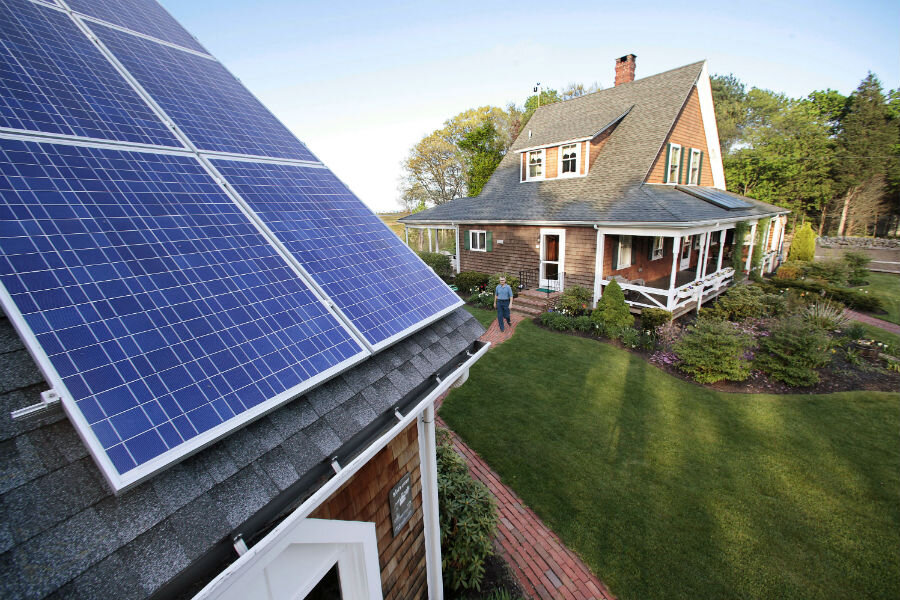Sun power for all? Solar panels coming to low-income neighborhoods
Loading...
You may not have to own your own roof to access solar energy.
The White House announced a wide range of initiatives for sun-powered energy on Tuesday to increase lower and middle income families' access to renewable energy.
The announcement is another Congress-free step in the Obama administration’s actions on climate change and green energy, relying instead on executive action by the Obama administration, collaboration between state and local governments, and private sector efforts.
The White House will slash electric bills for low-income households and make affordable housing greener by committing 300 megawatts of solar power for subsidized housing by 2020. That would triple the current 100 MW solar commitment to federally subsidized housing, a goal set by in 2013 and already exceeded five years ahead of schedule.
The new plan will expand solar community projects, make it easier for homeowners to borrow money for solar projects, and create a nationwide program to help renters gain access to solar energy, officials said Tuesday.
States, localities, philanthropists, and private corporations have pledged $520 million for new investments in community solar, to be focused on low-income communities. Power companies, rural electric co-ops, and housing authorities are putting in place 260 projects to expand low-income solar access.
In June 2013, President Obama laid out his climate action plan, detailed in his 2014 State of the Union. Since then, The Guardian reports, the administration has taken initial action on all 75 goals to cut carbon pollution, prepare the US for climate change, and help reach a global warming deal.
The emphasis on solar energy comes at a time when the cost of solar panels is dropping significantly and Americans’ reliance on renewable energy is growing each year. Solar more than doubled, and wind energy grew by over 8 percent from 2013 to 2014, The Washington Post reported.
Still, renewable and green energy make up less than a tenth of energy consumption in the US, though its growth rate is outpacing coal and gas, according to a report by Solar Energy Industries Association.
Access to solar panels had largely been reserved for the wealthy, for those who owned roofs outright and could buy the pricey technology. But as solar has gotten cheaper, and state governments and the Department of Housing and and Urban Development (HUD) have rallied around renewable energy as a way of cutting costs for low-income communities, that could change.
Currently, 49.1 million households earning less than $40,000 per year make up 40 percent of all US households, but account for less than five percent of solar installations, according to a report from George Washington University.
Community solar projects, like those announced Tuesday, help renters and those in subsidized housing benefit from solar energy, noted the report. Community projects are typically larger and therefore more cost effective than individual rooftop systems, plus they allow for partial ownership of solar technology that may better match the need and ability of lower-income families to invest in solar. Perhaps most importantly for low-income families, access to renewable energy cuts monthly utility bills.
Rep. Elijah E. Cummings (D) of Maryland said his office routinely receives calls from constituents who struggle to afford utilities. The programs announced Tuesday will not only help the planet but also save money for families who could not otherwise gain access to renewable energy, he told The New York Times.
“The difference in a monthly bill of $10 or $15 means a lot to the people who live on my block,” Mr. Cummings said.







